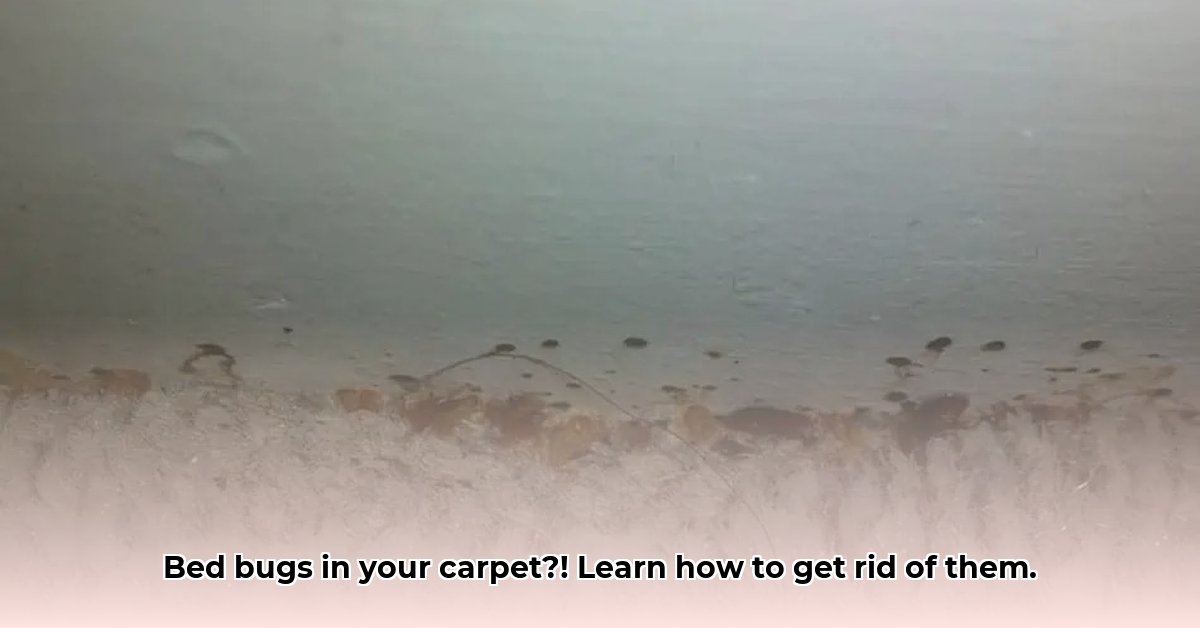Waking up with itchy bites is alarming, especially when you suspect bed bugs might be lurking in your carpet. While they prefer your bed, these pests can infest carpets, using the fibers as a convenient hiding place. This comprehensive guide provides actionable steps to identify, eliminate, and prevent bed bug infestations in your carpets.
Recognizing Bed Bugs in Your Carpet
Bed bugs don’t burrow into carpet fibers like fleas, but they exploit the carpet’s texture for shelter, especially edges, corners, and areas beneath furniture. Their proximity to your bed allows easy access to their “midnight snack.” Here’s how to detect their presence:
Telltale Signs of Bed Bugs
| Sign | Description |
|---|---|
| Live Bed Bugs | Reddish-brown, apple seed-sized, flat, oval insects. |
| Musty Odor | A sweet, musty scent, often compared to overripe berries or coriander. |
| Eggs/Eggshells | Tiny, pearly white eggs and translucent, rice-like shells. |
| Molted Skins (Casings) | Translucent, brownish-white exoskeletons shed by growing nymphs. |
| Fecal Stains | Small, dark, blackish-brown spots or smears (digested blood). |
If you notice any of these signs, it’s time to take action. However, remember that other pests, like carpet beetle larvae, can cause similar issues. Carpet beetles cause allergic reactions, not bites. Bed bug bites appear as itchy, red welts, often in clusters or lines.
Eradicating Bed Bugs from Your Carpet: A Step-by-Step Guide
Here’s a comprehensive plan to eliminate bed bugs from your carpets:
-
Thorough Vacuuming: Use a crevice tool to vacuum all carpet areas, especially edges, corners, and under furniture. Immediately seal and dispose of the vacuum bag outside to prevent escapees.
-
Steam Cleaning Power: High heat kills bed bugs and their eggs. Use a steam cleaner reaching at least 140°F (60°C), ideally between 140-180°F, concentrating on edges, corners, and areas beneath furniture. Repeat the process twice for optimal results. Some research suggests steam cleaning may be more effective than vacuuming alone.
-
Diatomaceous Earth (DE): This natural powder, made from fossilized algae, dehydrates bed bugs. Sprinkle a thin layer of food-grade DE on your carpet, focusing on suspected hiding spots. Let it sit for a few hours, or even a few days, then vacuum thoroughly. Wear a mask during application to avoid inhaling the dust. Ongoing research is exploring DE’s long-term effects and potential impact on indoor air quality.
-
Professional Pest Control: For severe infestations or persistent problems, professional pest control is the most effective solution. They have specialized equipment, insecticides, including those for carpets, and expertise to eliminate even the most stubborn infestations. They can also differentiate between bed bugs and other pests.
Preventing Future Infestations
Prevention is the best defense against bed bugs. Here’s how to keep them out:
- Regular Vacuuming: Frequent vacuuming disrupts their life cycle and removes food sources.
- Travel Inspection: Carefully inspect luggage and clothing after traveling to avoid bringing home unwanted guests.
- Secondhand Furniture Caution: Thoroughly inspect used furniture for bed bugs before bringing it inside.
- Mattress Encasements: Use zippered encasements to create a barrier around your mattress and box spring.
DIY vs. Professional Treatment: A Comparison
| Feature | DIY | Professional |
|---|---|---|
| Cost | Lower upfront cost. | Higher initial cost. |
| Effectiveness | Suitable for minor infestations. | Best for severe or recurring cases. |
| Time | Time-consuming, requires multiple treatments. | Faster, more efficient. |
Frequently Asked Questions
- Why are bed bugs still present after treatment? Possible causes include re-infestation from neighboring areas, improper treatment application, or insecticide resistance.
- What’s the cost of professional treatment? Cost varies based on factors like home size, infestation severity, treatment type, and location. Obtain quotes from several reputable companies.
By understanding bed bug behavior, recognizing the signs of infestation, and taking proactive measures, you can effectively combat these pests and reclaim your home. While this guide offers current best practices, remember that research is ongoing. Stay informed about the latest developments in bed bug control.
- Dora the Explorer Wipe-Off Fun: Safe & Mess-Free Activities for Little Explorers - April 18, 2025
- Does Lemongrass Repel Mosquitoes? Fact vs. Fiction + How to Use It - April 18, 2025
- Do Woodchucks Climb Trees?Fact vs. Fiction - April 18, 2025










